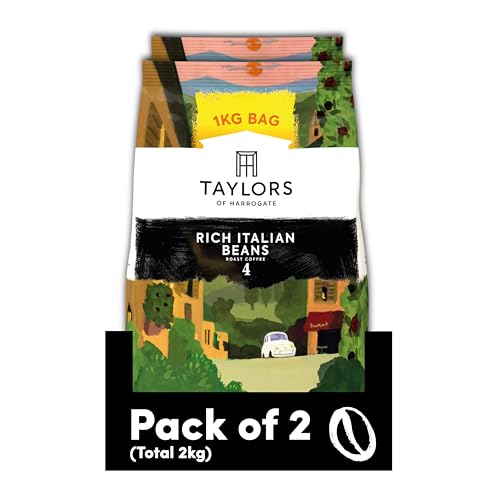Starbucks Coffee Beans 1kg
Starbucks was a cozy cafe located in Seattle Washington, before it became famous for its peppermint Mochas and red holiday cups. The company's founders were focused on selling whole bean coffee, but they weren't aware of the potential of espresso drinks.
Schultz changed everything. He was determined to show off his roasting and mixing abilities.
Origin
Starbucks coffee beans travel an extensive, winding route before they reach your cup. Almost all of the world's coffee is produced in an area called the Coffee Belt, which stretches around the globe between the Tropics of Cancer and Capricorn. The climate, soil and culture of each region affect the taste of the beans. Starbucks sources its coffee from more than 30 countries around the world.
Most Starbucks coffees are sourced from three regions: Latin America, Africa, and Asia-Pacific. These regions are known for their full-bodied flavor, balance of acidity and weight. Starbucks also sources coffee from St. Helena in the South Atlantic Ocean, a volcanic tropical paradise.
The Starbucks's coffee beans are and perfectly roasted giving them an incredibly smooth and delicious flavor. The coffee beans are ground into a fine powder which is ready to be brewed. The powder is then mixed with water and put into the cup to make the perfect cup. The result is a cup that is full of flavor and energy.
While the majority of Starbucks coffees are made from blends of different beans, there are numerous varieties of single-origin coffees available at the chain's stores. Single-origin coffees from Starbucks offer an array of flavors that include nutty and sweet, fruity, and chocolatey. Certain single-origin coffees are certified organic.
Starbucks's coffee is sourced from all over the world, but they must meet certain requirements to be considered specialty. Specialty coffee was first introduced in the 1980s when roasters and cafes began to experiment with lighter roasting and manual methods. Starbucks didn't start making its coffee sourcing decisions based on these standards until recently, but has since adopted them.
Starbucks also strives to improve the quality of life for the people who cultivate its coffee. It offers its farmers a higher price over market prices and helps them invest in their communities. It also promotes sustainability, and works to reduce waste. This has led to the creation of new coffee-growing practices and techniques that safeguard the environment.
Roast
Starbucks roasts beans in large quantities and buys beans in bulk. The roasting process takes between 10 and 15 minutes, and the resultant dark roasted beans. The beans that are dark roasted have an intense flavor and a full body. The beans are ground up and then delivered to stores and supermarkets in the form coffee grind. Most of the time, the coffee grind isn't optimally suited to making the best cup of coffee because it already tastes bitter. This is why a lot of people add a lot of sugar, cream milk, flavorings whipping cream, and other flavorings to their coffee. This won't mask the bitterness in the coffee, but it will make the drink more appealing.
The beans begin to steam once they are put in the roaster for the first time due to their internal moisture. The "first crack" is a distinct sound that signals the start of the roasting process. At this stage, the sugars start to caramelize and water that has been bound up begins to escape. During this time the structure of the bean is broken down and the oil begin to migrate outward. The final stage is the point at which most coffees are considered to be city roasts.
The beans that were roasted are then cool and are separated from any stones or other impurities that have been removed from the roaster. They are then inspected by hand before being bagged and sold. Some beans have a dark spot called"quaker. coffee beans offer did not change color or tasted burned. This is a typical phenomenon and does not necessarily mean that the coffee is not good.
The beans are often roast in small batches, sometimes as little as 20 pounds. They are referred to as "micro lots". This is because each coffee will be roasted according to specifications set by the Starbucks team of coffee masters. The team of coffee masters designs profiles that are used in all Starbucks(r), roasting facilities around the globe. These profiles ensure that every cup of coffee made will be consistent, and has a specific level of body and flavour.

Flavor
Starbucks purchases their coffee directly from the farm where they are grown in order to help improve quality and ensure an ethical source. For every one pound of coffee beans sold, Starbucks plants trees. The beans themselves aren't identified by their origins to show where they come from although some blends are named - Veranda comes from Sumatra, Komodo Dragon from Indonesian, and Anniversary is a mix of centeral american and african beans. The flavor profile of the beans is unique and they make a silky, velvety cup with a delicate balance between sweetness and smoothness. Every sip is a feast of symphony flavors that leave a pleasant taste on the palate.
Weight
The weight of Starbucks coffee beans 1kg is contingent on the kind of blend. A Starbucks House Blend, for instance, weighs 14 oz per pound. A pound of Espresso-roast beans at Walmart on the other hand weighs 16 oz. This translates to an increase of 67% at Starbucks compared to Wal-Mart.
Starbucks' Pike Place Roast is named for the iconic Seattle market. Its medium-light roast offers balance, sweetness, and smoothness in every cup. This blend made of beans from Latin America is perfect for Americano or espresso. This premium blend comes with the FlavorLock package to protect the coffee and for preservation of flavor. This is Starbucks' timeless signature coffee. It is a perfect choice for coffee fans! Made from 100% Arabica beans. This is a great present for Starbucks fans.
